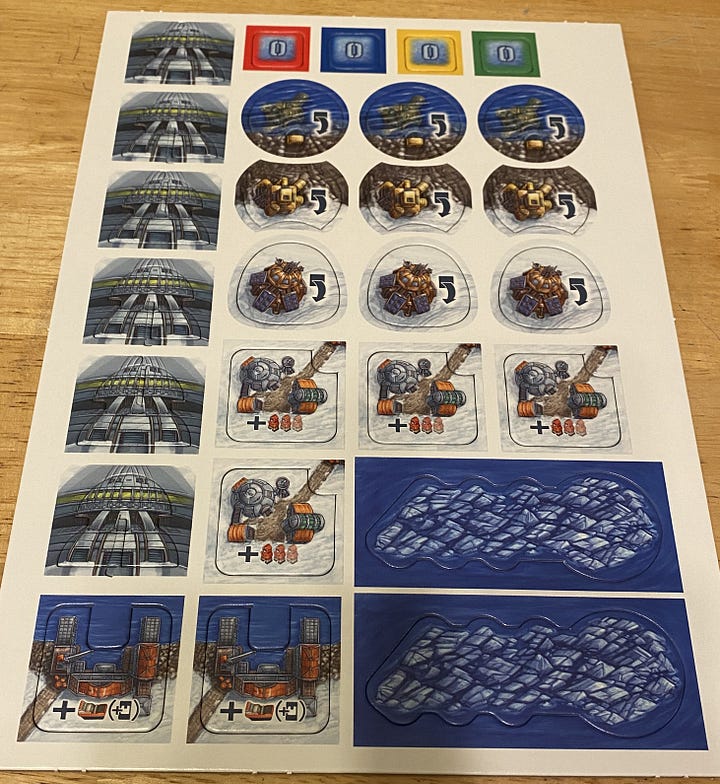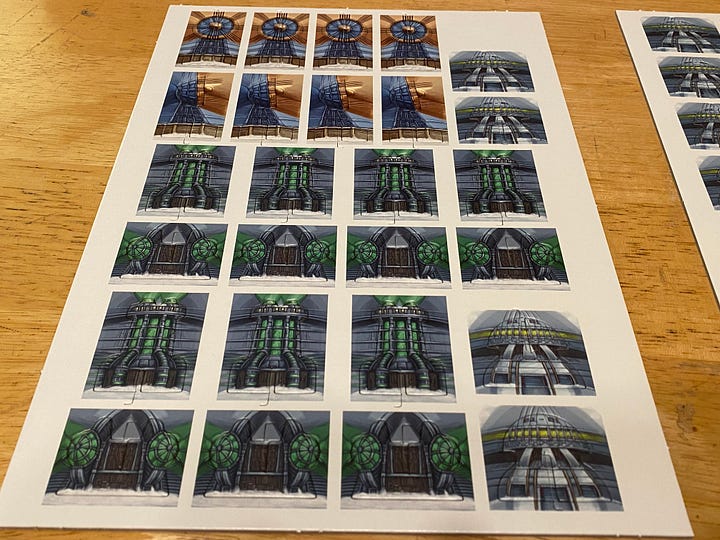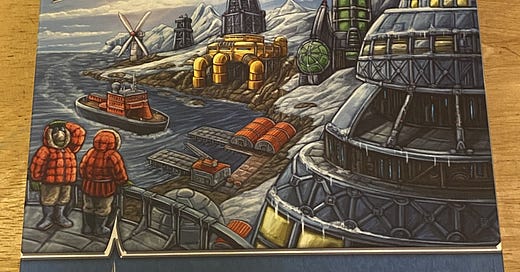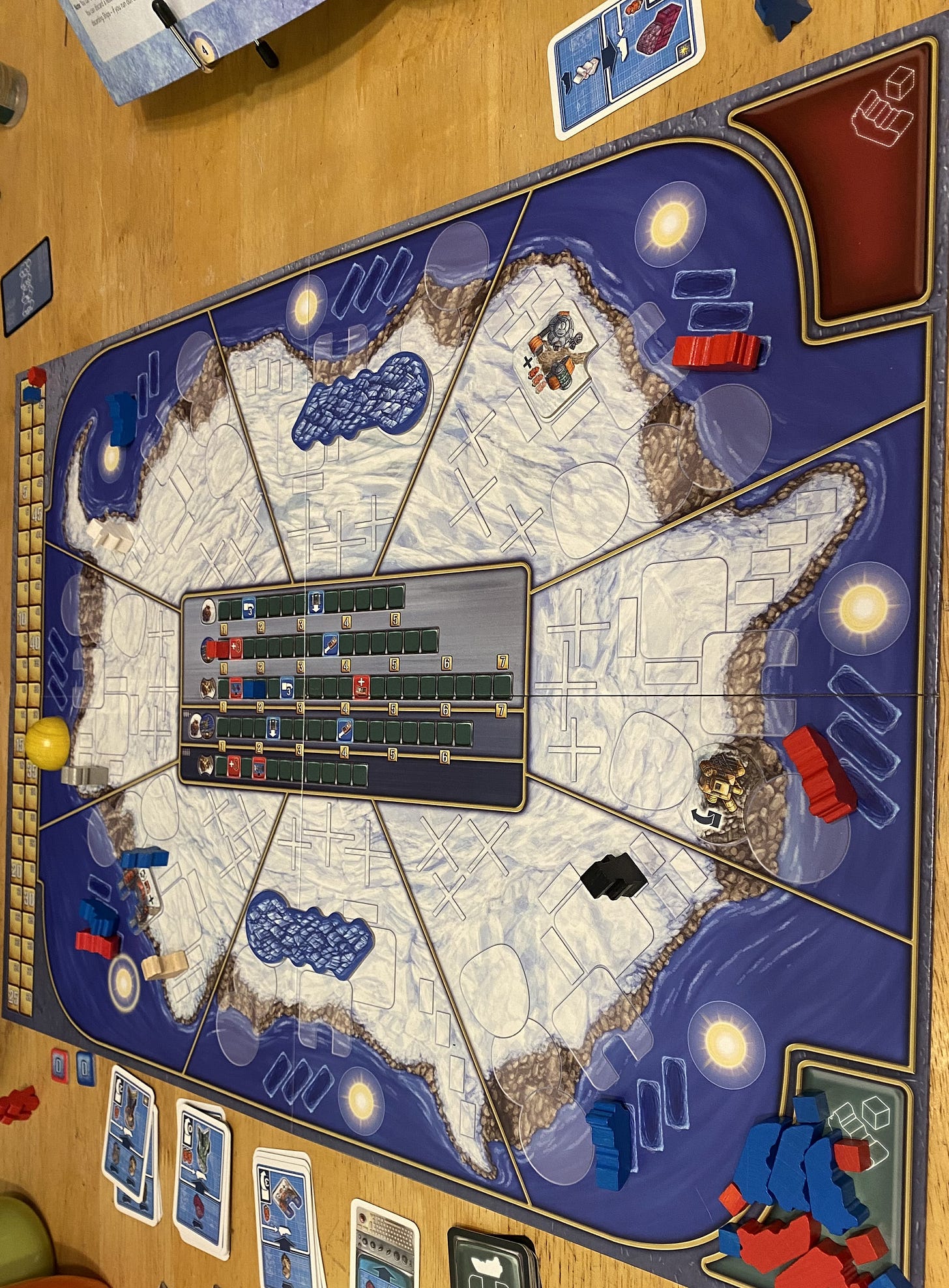Antarctica: An Ice-Cold Building Game
I tried to decipher this game so that you don’t have to
When I assign excerpts of James Fenimore Cooper’s The Sea Lions or Edgar Allan Poe’s The Narrative of Arthur Gordon Pym to my students, I preface the assignment with a kind of epitaph: “Here lies the work of a wonderful writer who desperately needed a good editor. I read the whole novel so that you don’t have to.”
Playing Antarctica: An Ice-Cold Building Game by Charles Chevallier feels like reading those novels. I enjoyed it and appreciated its take on a place I love, but would think twice before subjecting anyone else to the experience.
The game has a witty and entertaining concept: amid rapidly melting polar ice caps, players mimic Antarctic Treaty nations by building icebreakers, research bases, and oil derricks. Wait, oil derricks? As the instructions explain, your goal is to “be the one that gained the greatest fortune…um, contributed the most to rescue mankind.” (From climate change, of course). In other words, you’re living the dream of Kim Stanley Robinson’s post-Treaty novel Antarctica, where the continent is up for grabs.
Like Cooper and Poe, the game’s creator Charles Chevallier did his research. The game is charmingly accurate. Icebreakers are vitally important, the sun (a satisfyingly hefty yellow wooden hemisphere) moves in a clockwise spiral, and the artwork features a version of the US Antarctic Program’s iconic Big Red parka. (Although, given that Chevallier is French, he may have the French version in mind.)
Also like Cooper and Poe, the creator could have used a good editor. According to the acknowledgments, the game was lovingly workshopped at gameboard conventions—presumably by a bunch of gameboard enthusiasts. As far as my fellow players and I could tell, no one was too worried about how the average, impatient person would decipher five distinct (but almost identical) decks of cards, several dozen distinct (but almost identical) wooden and cardboard figures, and instructions that launch into Player A’s first move before telling you what pieces you need, how to set up the board, how gameplay works, or even how to select Player A. By the time you make it to the end of the rules, everyone seems to have forgotten about poor Player A’s earlier move, because the number of pieces no longer adds up. And there’s no mention of how Player B, C, etc. should follow suit.
If you’ve already cracked a beer or two, you’re lost. Pull out Roll to the South Pole instead. Or Monopoly.
If you decide to forge ahead, my advice is: figure out as much as you can, and then make up the rest. (Don’t pretend this isn’t how you play Monopoly, too.)


So here’s a quick-and-dirty summary from someone who only partially figured this game out.
Players are aiming to advance along research tracks, which give Victory Points towards winning. To advance, you need certain resources: primarily icebreaker ships, scientists, and access to coastal space where you can build research bases…and, naturally, oil derricks and wind turbines. As the sun circles the board, each ship in its path is forced to move to a different region, where the ship’s owner may take advantage of existing infrastructure or build more to advance research objectives.
We weren’t sure who won our game, but we had a great time making up the rules. If anyone out there has tried this game, I’d love to hear from you. I was Player B and never figured out what to do with my cubes.





